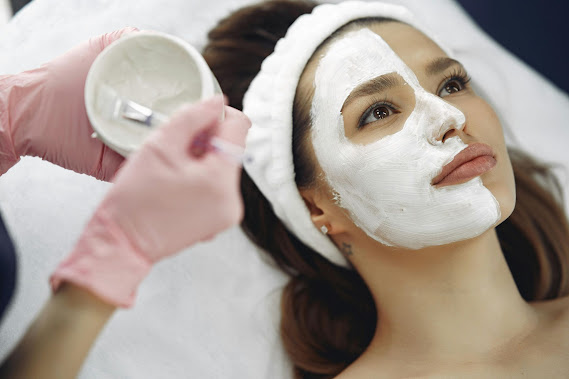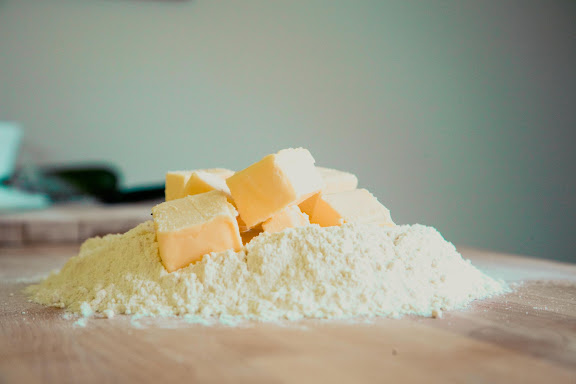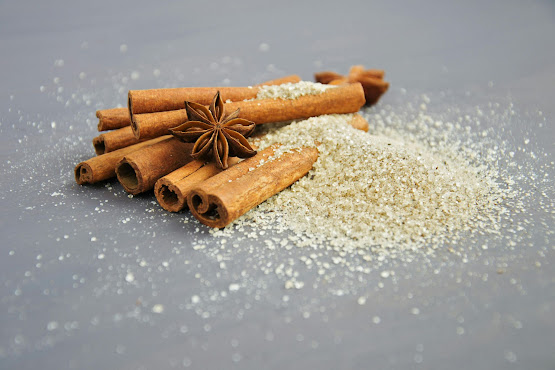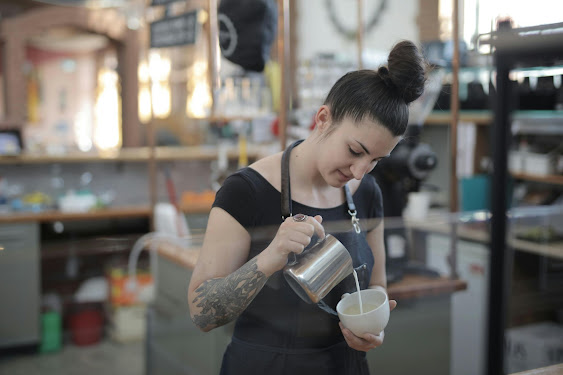6 Components You Can Apply on Your Face
When used topically, a few common kitchen items may also be beneficial to the skin. This could include milk, oatmeal, and other foods.

You probably go to the kitchen first when you’re looking for a snack. It might also have practically everything you need to make improvements to the state of your skin.
The benefits of cost savings are obvious.
The components for skin care products you make in your kitchen are undoubtedly already in your cabinet and are far less expensive than expensive items you can purchase in stores or online.
Still, the question is: Do they hold up against makeup purchased from stores?
Before you open your pocketbook, it could be worth raiding the refrigerator or kitchen cabinet if dehydration, sensitivity, or acne are your main skin concerns.
Several everyday kitchen ingredients have benefits for your skin.
Using oatmeal to brighten
Oatmeal is not only useful in cooking but also offers many benefits for maintaining good skin.
Because of its coarse texture, it works well as a mild exfoliant to help remove dead skin cells.
Additionally, it possesses antioxidant and anti-inflammatory properties that have been demonstrated to help soothe and protect dry, irritated skin.
Oatmeal is mild enough to use on sensitive skin types, according to Louise Walsh, a registered nurse in the United Kingdom with expertise in dermatology and cosmetics.The expert says, “Oatmeal has a calming effect on red, sensitive skin.”

In addition, oats can be used to treat skin disorders like eczema, acne, and psoriasis when mixed with a moisturizer.
To relieve eczema-related irritation, the American Academy of Dermatology Association (AAD) suggests taking a bath with colloidal oatmeal. This variety of oatmeal is offered as a powder that dissolves in water and is finely powdered.
Dull skin tone? Additionally, oatmeal might be a potent component for skin lightening.
In a 2020 study, after taking colloidal oatmeal twice daily for two weeks, individuals with hand eczema experienced a significant increase in skin brightness and hydration.
In contrast to a typical moisturizer, which merely enhanced hydration, a 1% colloidal oat eczema cream enhanced skin pH, barrier function, and hydration, according to another 2020 study.
A 2021 investigation additionally mentioned the improvement in skin barrier function of colloidal oats.
Additionally, oats include a natural cleaner called saponins that may help unclog clogged pores.
Colloidal oatmeal, often known as ground oats, is a marvel for dry, sensitive, red, itchy, and irritated skin. It nourishes and shields the skin’s protective layer when combined with water to form a mask, avoiding dehydration. It will soothe and hydrate the skin, according to Walsh.
How to Apply It
Grind up two to three tablespoons of oatmeal, then add water to get a paste-like consistency. After applying to the skin, give it ten minutes and then rinse it off.
Peanut butter to provide nourishment
Avoid putting peanut butter on your skin if you are allergic to peanuts. Consult a physician if you’re unsure, and always start with a patch test.

Would you smear it on your face? Perhaps you like to eat it with a spoon or just dip your fingers into the jar in place of utensils.
As with all nut butters, peanut butter has a high oil content that can nourish your skin.
It was a shaving hack that went viral back in 2015. Supporters of this strange fA 2018 studyad asserted that using peanut butter instead of their typical shaving gel resulted in a closer shave and softer skin.
This is supported by some scientific evidence.
Large amounts of peanut oil, which is present in peanut butter, are said by Trusted Source to strengthen the skin barrier. A 2018 evaluation of the literature suggests that it might potentially provide protection against UV rays.
Vitamins B and E, which are also present in peanut butter, may lessen a number of indications of aging skin, such as redness and hyperpigmentation (Reliable Source).
“There are a lot of oils and vitamins in peanut butter, which are easy to find in the kitchen and may be beneficial for the skin,” claims Walsh.
Walsh advises buying organic peanut butter whenever possible if you apply it on your skin. Supermarket brands frequently include sugar and salt, which are bad for the skin.
How to Apply It
Walsh recommends combining one egg, one tablespoon honey, and one tablespoon peanut butter.
After cleansing the skin, gently massage the mixture in. After 15 minutes, remove with lukewarm water and rinse.
Cinnamon to add plumpness
We all know that cinnamon tastes great in hot chocolate, baked goods, and even on top of oatmeal, but did you know that it might also help your skin seem more radiant?

Walsh affirms that the antimicrobial effects of cinnamon are well-known. Its warming properties also promote blood flow, which makes the skin appear more radiant and plump.
According to a 2017 review by Trusted Source, cinnamon has anti-inflammatory properties as well.
Anti-inflammatory treatments are essential for many skin diseases since inflammation causes redness, irritation, and possibly chronic skin conditions like acne and rosacea, according to Walsh.
For clogged skin and breakouts, a homemade face mask made with honey and crushed cinnamon works wonders.
When combined, they provide an exfoliating Walsh continues, “When combined with honey, ground cinnamon can be an especially effective ingredient for skin care.”
component, which will promote the healing of lesions and breakouts,” the speaker says.
How to Apply It
Apply a light scrub using a mixture of ground cinnamon and honey, as suggested by Walsh. Rinse with lukewarm water after 10 minutes of leaving it on the skin.
Burns and discomfort are possible side effects of ground cinnamon.
Consult your physician before applying ground cinnamon topically, and always perform a patch test beforehand. Avoid applying essential oil of cinnamon to your skin.
Cow’s milk to calm
A body benefits from milk on more than just the inside. Cow’s milk has additional benefits for your skin.

Lactic acid, which is frequently used in mild skin peels, is found in milk, according to Walsh.
Sensitive skin types can safely use it because, as she says, “its large molecular weight stops it from penetrating too deeply, so it tends to not cause too much irritation.”
Alpha hydroxy acids include lactic acid (AHA).
According to study Trusted Source, these acids are utilized in both professional chemical peels and over-the-counter medications for acne, scarring, rosacea, and hyperpigmentation.
Cow’s milk’s proteins and lipids may help soften skin, and lactic acid is a mild exfoliant that encourages skin cell shedding and leaves skin feeling smooth.
Additionally, there is scientific data that suggests cow’s milk can help relieve a number of skin disorders, particularly those that cause irritated, dry, or itchy skin.
One earlier study from 2006 suggests that women over 65 may receive relief from itchy skin by applying cow’s milk topically, even though the majority of research on the efficacy of lactic acid does not utilize this method.
Walsh claims that the dairy section contains more skin goodies.
Walsh claims that yogurt has comparable advantages and can be a more convenient option for a face mask because it doesn’t need mixing ingredients. “It’s cool and beautiful too.”
How to Apply It
Walsh recommends using cow’s milk as a toner to exfoliate your skin or combining it with flour to make a mask. Or for an all-over skin treat, add one or two cups to your bath.
Coffee to ease the pain
It serves as a morning pick-me-up for some. Coffee may have the same rejuvenating effects on your energy levels as it does on your skin.

Celebrity aesthetician Katrina Cook, headquartered in Beverly Hills, claims that using coffee grounds topically to the skin has several incredible advantages.
“They can help fade stretch marks over time, lessen body breakouts, and exfoliate the outermost layer of dead skin cells.”
Additionally, coffee may lessen the appearance of cellulite.
A review of the literature for 2021
According to Trusted Source, coffee’s caffeine component may aid in promoting blood flow, which may lessen the look of skin dimpling.
How to Apply It
Cook states, “I personally like to use coffee grinds to exfoliate away dead skin as part of my weekly routine.”
Apply circular pressure to the grinds with your hands while in the shower, starting at your feet and working your way up to your shoulders. Next, give it a quick rinse.
Turmeric as a medicinal
This yellow spice does more for your cuisine than just flavor it. It has a ton of anti-inflammatory qualities as well.
According to Walsh, “turmeric is a priority ingredient in some skin care products because it has antiseptic and anti-inflammatory properties.”
“Many people also take it as a supplement for general health purposes to reduce inflammation.”
Turmeric has been shown in a 2019 assessment of studies by Trusted Source to be a potent substance for reducing inflammation and speeding up wound closure when administered topically.

Furthermore, an increasing body of research indicates that curcumin, the main ingredient in turmeric, may be used medicinally to treat a range of skin conditions, such as psoriasis, acne, atopic dermatitis, facial photoaging, and possibly even skin infections.
Ten studies in all
Trusted Source reported a statistically significant reduction in the severity of skin diseases after applying turmeric topically and orally. It’s crucial to remember, though, that more research is required.
How to Apply It
Walsh suggests making a paste out of turmeric, honey, flour, or milk and using it as a face mask. After 15 minutes, leave it on and rinse with lukewarm water.
Lighter skin tones and fabrics may get stained by turmeric. Direct skin contact can irritate, redden, and swell an allergic person.
Always perform a patch test to evaluate how your skin responds. Apply to a small area of skin and wait 24 to 48 hours.
Before applying turmeric to your skin, you might want to see a doctor, particularly if you have sensitive skin or a skin ailment.
The conclusion regarding kitchen cosmetics
When weighed against store-bought cosmetics, may materials from the kitchen be used for skin care?
While some aim to smooth and brighten the skin, others might address different types of skin problems.
It’s crucial to keep in mind that scientific study can have limitations, so you should always use caution and perform a patch test before putting any new chemical on your skin.
Make sure to consult a physician or dermatologist if you already have a skin concern.
Nevertheless, the pantry is full of products that your skin might like.






Pingback: “8 Ultimate DIY Face Scrubs for Stunningly Radiant Skin” - skincaresights.com